station road
station road
Built to serve the Railway Station
Station Road was built specifically to serve the new Yeovil Town Railway Station, connecting the station with Middle Street. In 1860 the Salisbury and Exeter line opened a station at Yeovil Junction with an extension to Hendford and the new Town Station the following year and a goods line connected Yeovil Junction with Pen Mill in 1864.
Shortly after the road was completed, South Western Terrace (named after the London and South West Railway Company) was built by Levi Ridout along the north side of the road, from Middle Street as far as the Alexandra Hotel, before turning through 90° to run along to Newton Road.
During the 1870s and 1880s, because the Town Station, famous for having two Station Masters, was a joint station built by the London and South Western Railways Company (L&SWR) and the Great Western Railway Company (GWR), Station Road was frequently known as Joint Station Road.
The coal yard opposite was originally started by William Skinner who, having worked for many years on the railways, obviously appreciated the importance of coal to the new transport system. From working as a railway inspector in 1861 at the newly opened Yeovil Town Railway Station, seen in the photograph below, by 1871 he was listed in the census as a coal merchant and cannily located his coal yard in Station Road, adjacent to the railway goods yard.
By the 1960s, when the buses parked alongside (see photo below), it was Burt's coalyard.
With the closing of the Yeovil Town Railway Station in the early 1960s, Station Road was extended to the southwest to join with Stars Lane and Summerhouse Terrace. Station Road has now been renamed Old Station Road.
map
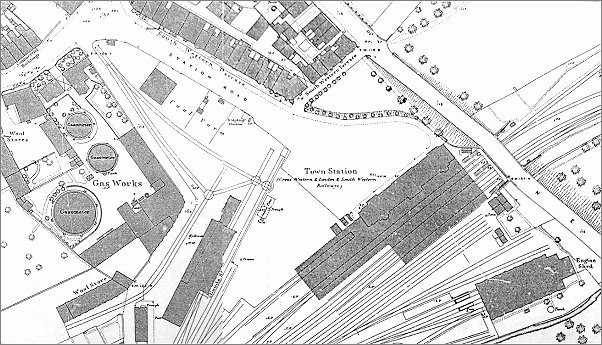
The 1886 Ordnance Survey showing Station Road running from Middle Street, at top left, to the Town Station at lower right.
gallery
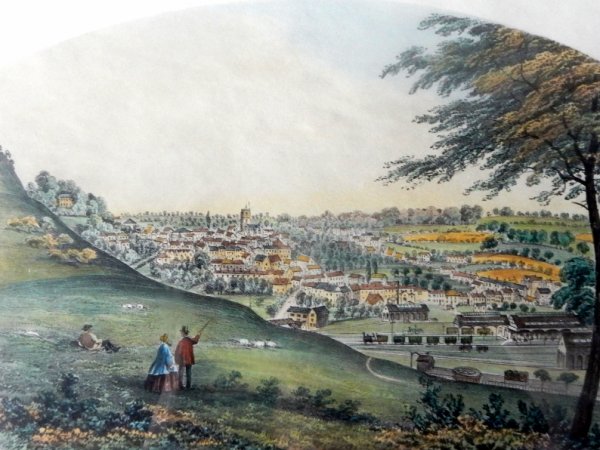
From my
collection
This hand-coloured lithograph, entitled "View of Yeovil from Newton Hill" overlooking the new Yeovil Town Railway Station was made about 1861 (clearly just after the Town Station opened). Drawn by Edward Holton Buckler, it was published by Thomas Willy Vincent of Yeovil.
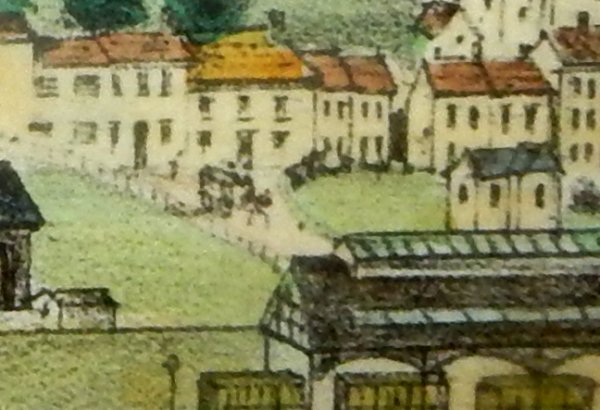
From my
collection
This enlargement of the lithograph shows the newly-built Station Road, complete with a coach of railway travellers, running across the field that lay between Middle Street and the new station. This is, of course, the earliest image of Station Road.
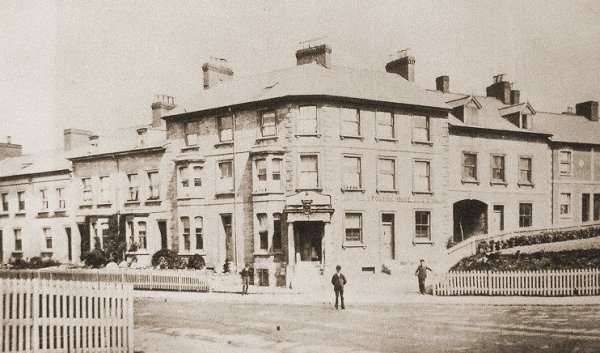
This
photograph
features in my
book 'Yeovil From Old Photographs'.
This photograph, taken around 1885, shows the Alexandra Hotel at the end of Station Road (at this time often known as Joint Station Road) before it widened out into a turning area in front of the railway station. Notice that, although the buildings at right had been built, the road itself had not yet been constructed. The terrace of buildings is South Western Terrace.
As a sidenote - the porte-cochere to the right of the Alexandra Hotel is Coldharbour Lane.
As a second sidenote - the house seen at the very far right of the above photograph was the home of Ellen Sheppard. Ellen was born about 1847 at Lyme Regis, Dorset, but her maiden name eludes us. In 1881, as a 35-year old widow, Ellen was a boarding house keeper at 16 South Western Terrace (the house in the photo). Living with her were her two daughters; Minnie and Nellie, aged 10 and 7 respectively and both born in Stoford, just south of Yeovil. Listed as 'boarders' were six young ladies aged between 21 and 28 and all six giving their occupations as 'assistant in refreshment rooms'. One was called Jessie Paramour and another was named Effie Thorogood - oh, come on! Now, I'm not casting aspersions (well, actually, I am) but it does seem to me that our Ellen was running a 'house of assignations' as brothels were euphemistically called at the time. In fact, for a young, newly-widowed woman with herself and her children to house, feed and clothe, being the madam of a whorehouse was actually not that uncommon (well, OK, perhaps it was not uncommon in London - granted, it may have been a bit uncommon in Yeovil outside of Park Street). In any event by 1889 'Miss' Ellen Sheppard was listed as licensee of the Fleur-de-Lys in High Street.
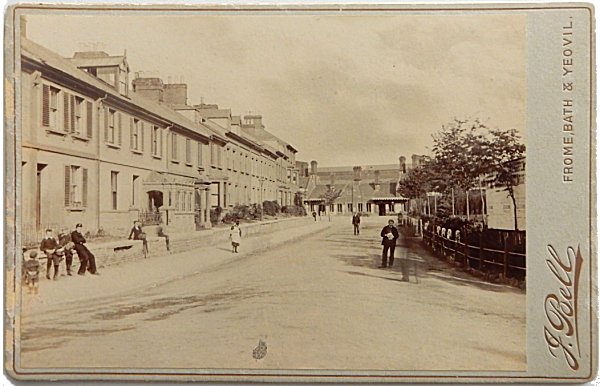
Courtesy of Jack
Sweet -
This photograph
features in my
book 'Yeovil From Old Photographs'.
Station Road and Yeovil Town Station photographed in 1896 by John Bell. The terrace of buildings at left, still there today, is South Western Terrace built by Levi Ridout.
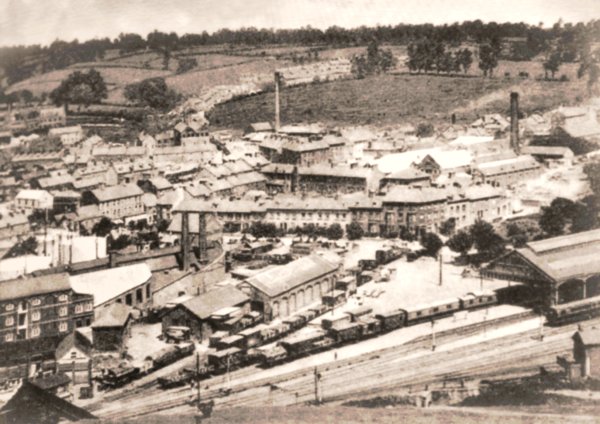
This
photograph
features in my
book 'Yeovil From Old Photographs'.
This photograph, taken from Summerhouse Hill, dates to about 1900 and shows, at top centre, the chimney of the Eastland Road brickworks with its associated buildings clustered around its base. To its left is the leather works built by William Bide (recogniseable by the double roof with a row of six black windows). Running along the bottom of the photograph is Station Road with the Alexandra Hotel at bottom right. In the top half of the photo, Eastland Road runs behind the chimney with fields either side!!!
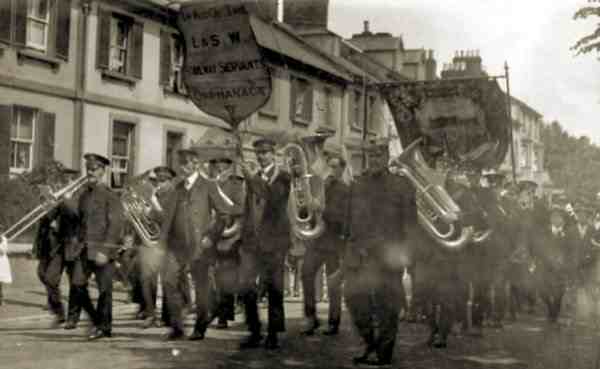
A 1920's photograph of a parade in Station Road by railway men - complete with their band - in support of the L&SW Railway Servants' Orphanage.
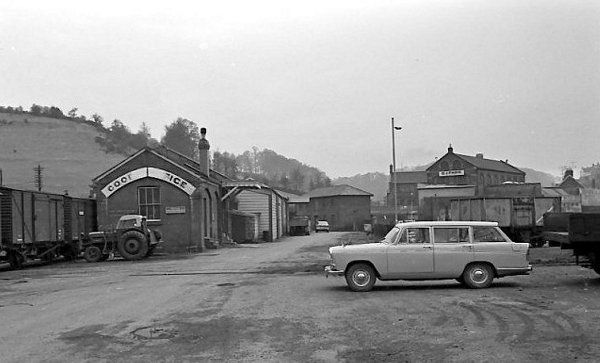
This photograph was taken in the early 1960s from in front of the railway station at the end of Station Road and looks west, with the coal yard area at right and the railway goods yard at left.
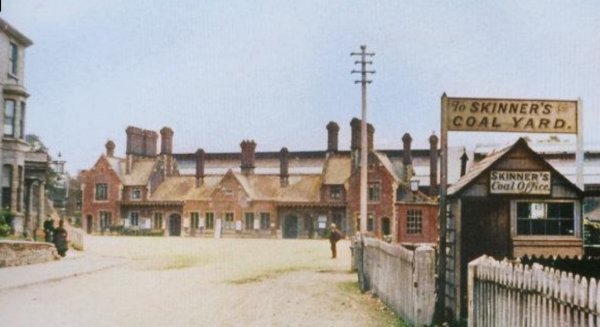
This
image
features in my
book 'Yeovil
- The Postcard
Collection'.
This colourised photograph, taken around 1910, looks down Station Road (now Old Station Road) to Yeovil Town Railway Station with the corner of the Alexandra Hotel at left and Skinner's Coal Yard at right. William Skinner had originally worked on the railways, rising to inspector, and kept a beerhouse in Middle Street.
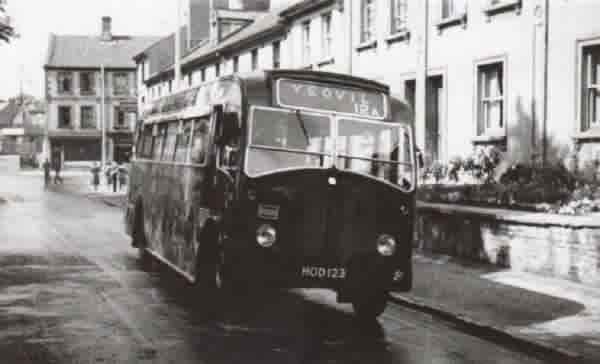
The 12a bus (to Charlton Hawthorn via Trent Over Compton and Sherborne) in Station Road, around 1955.
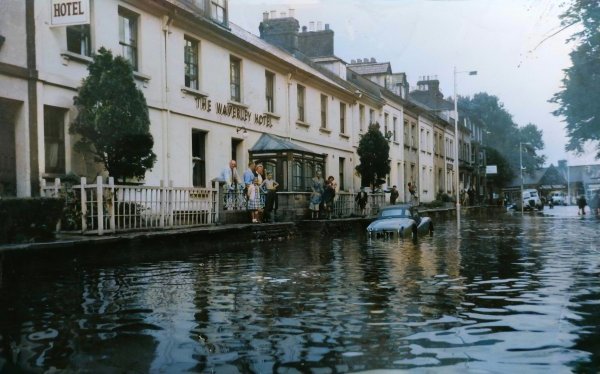
Courtesy of
Betty Barber
(née Bird)
A colourised photograph of Station Road under water - I'm guessing in the 1960s.
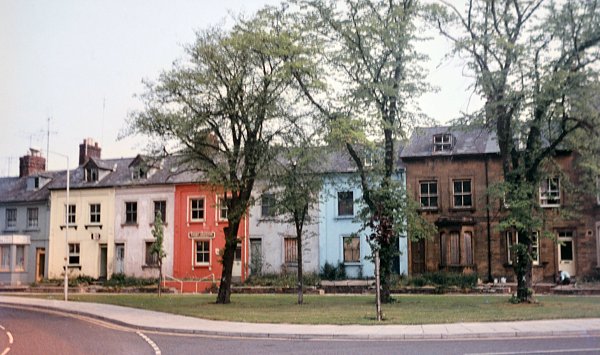
This photograph
is featured in
my book 'Now
That's What I
Call Yeovil'.
South Western Terrace photographed in the late 1960s - shops didn't really appear until the early 1970s.
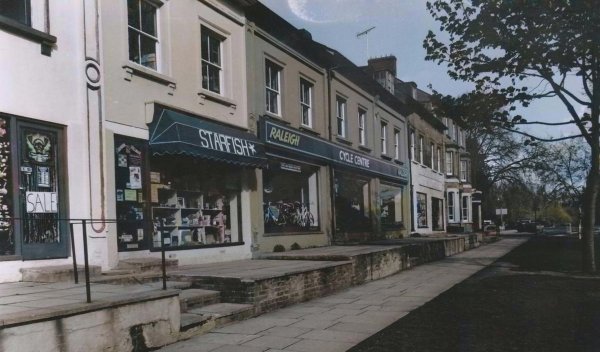
Photograph
(colourised) by
Trevor Hussey,
courtesy of Mrs
Anne Hussey
South Western Terrace, private houses all converted to shops. Photographed in 1990.
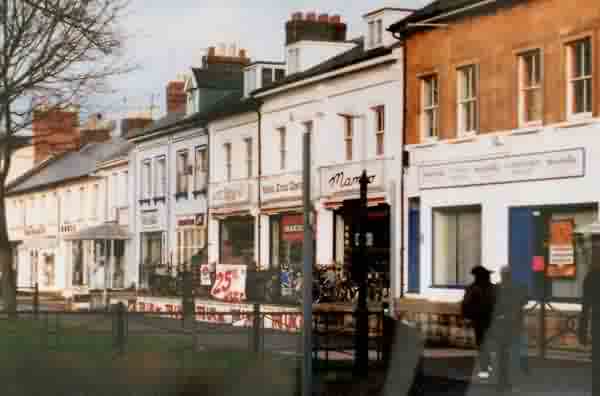
South Western Terrace in the late 1990s.
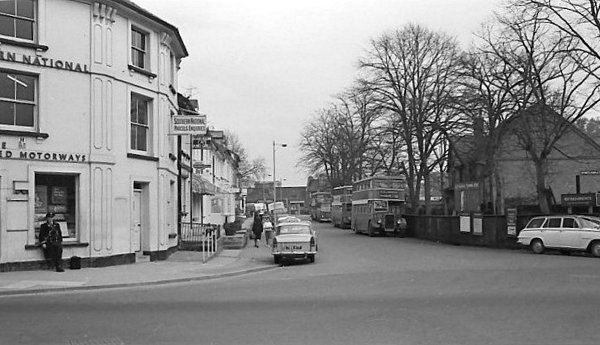
Station Road seen from Middle Street in the early 1960s. Station Road was a convenient 'end of the line' bus stop close to the station and the offices of the Southern National bus company were housed in what had been the old Fernleigh Temperance Hotel, at left.
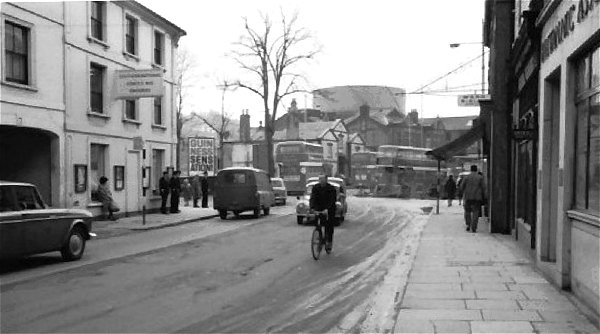
This photograph dates to about 1960 and is taken from Lower Middle Street looking towards the junction with Station Road (with the Guinness sign). In the background the gasometer stood next to Stars Lane.
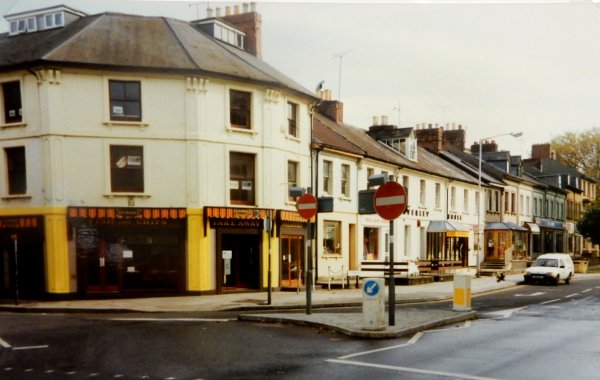
Photographed in the 1990s when the corner building was occupied by Palmer's fish & chip shop.
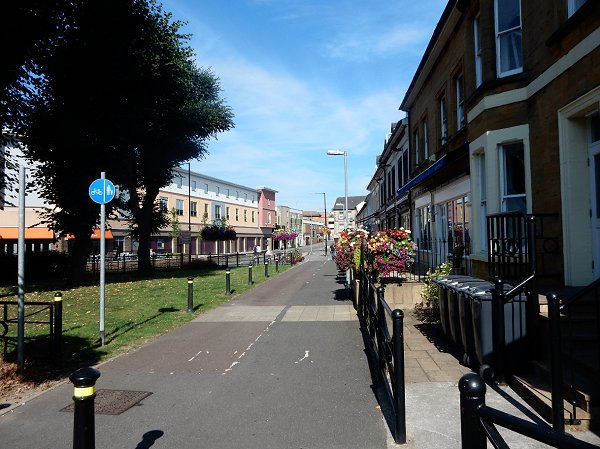
Station Road (now called Old Station Road) looking north. Photographed in 2016.
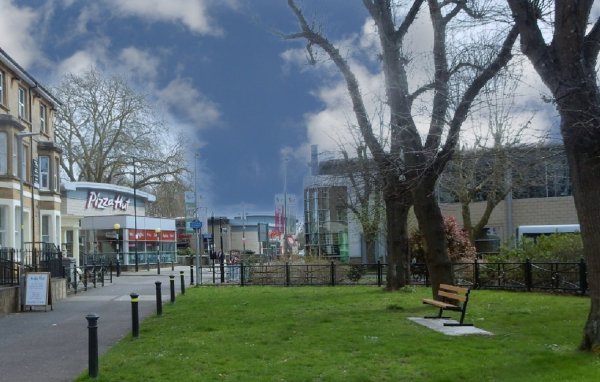
... and Station Road (now called Old Station Road) looking south. Photographed in 2023.